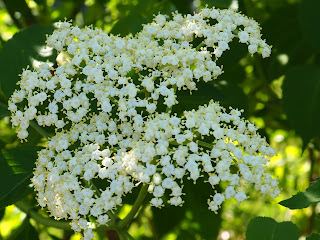As warmer weather has arrived, the biodiversity of plants at the Preserve has skyrocketed. Each species, large and small, possesses an array of adaptations. Like spring beauty, wild geranium
(Geranium maculatum) has nectar guides but also bright blue pollen to attract pollinating insects. Speedwells
(Veronica ssp.) can be found at a height of just 2-4 inches but these introduced weeds come in shades of brilliant purples and blues if you take a closer look.
There's more to the glossy appearance of buttercups
(Ranunculus ssp.) than meets the eye. The outer layer of the buttercup contain pigments that absorb certain wavelengths; the yellow wavelengths then travel to a thin layer of air beneath the surface that reflects the light. The special cells also reflect heat into the center of the flower, a useful adaptation that speeds up fertilization and growth.
 |
Flies and small beetles are attracted to the nectar of
thyme-leaved speedwell (Veronica serpyllifolia) |
 |
The bright blue pollen of wild geranium (Geranium maculatum)
attracts various insects such as the digger wasp and solitary bees |
 |
The petals of common buttercup (Ranunculus acris) appear shiny
because layers of air in cells on the surface reflect the light
 |
Common blue violet (Viola sororia) is unique among violet
species in that it does not contain a spur |
|
 |
Corn speedwell (Veronica arvensis) is a brilliant blue
but easy to overlook because of its small stature |
 |
The seeds of greater celandine (Chelidonium majus) contain
chemicals that attract ants, which can then disperse the seeds |









Comments
Post a Comment